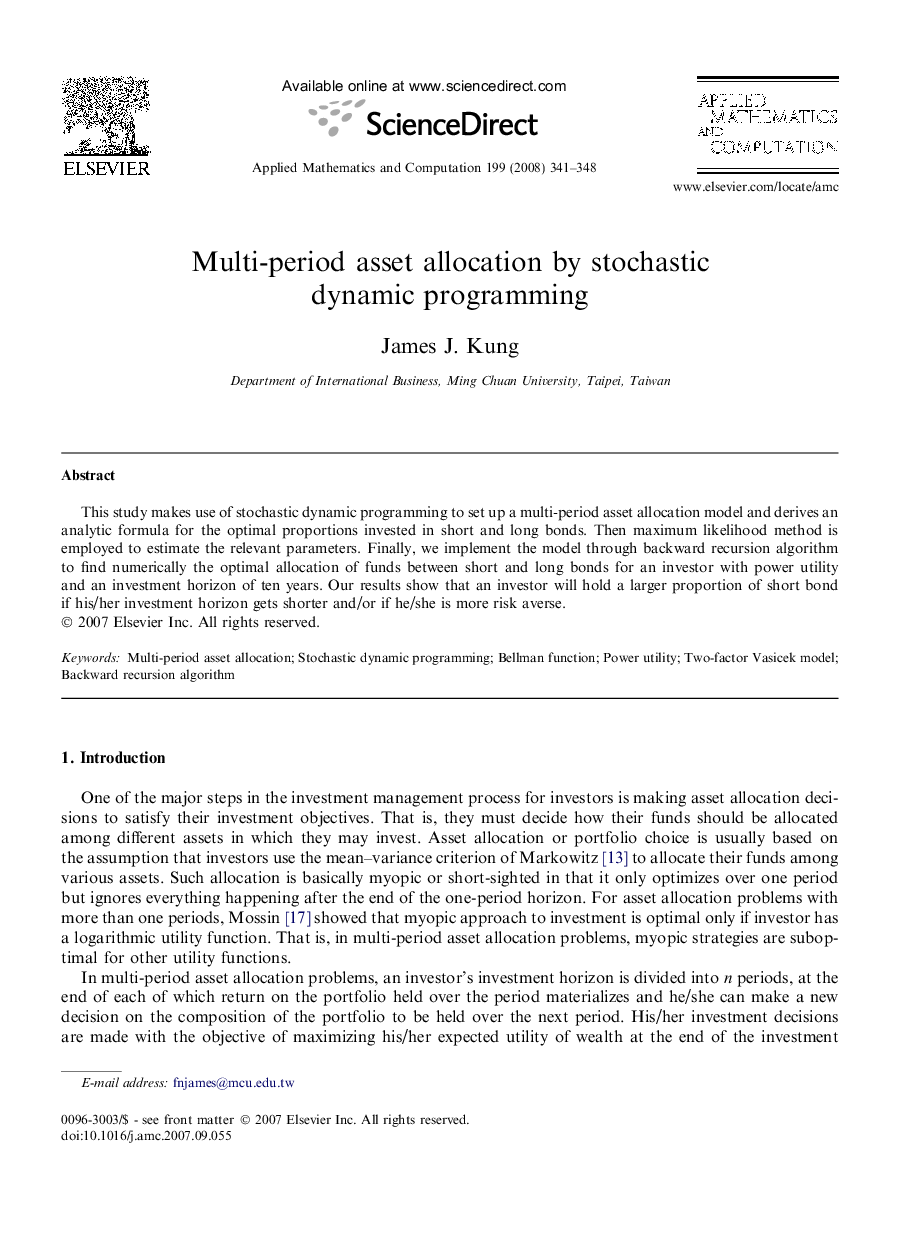| Article ID | Journal | Published Year | Pages | File Type |
|---|---|---|---|---|
| 4634128 | Applied Mathematics and Computation | 2008 | 8 Pages |
Abstract
This study makes use of stochastic dynamic programming to set up a multi-period asset allocation model and derives an analytic formula for the optimal proportions invested in short and long bonds. Then maximum likelihood method is employed to estimate the relevant parameters. Finally, we implement the model through backward recursion algorithm to find numerically the optimal allocation of funds between short and long bonds for an investor with power utility and an investment horizon of ten years. Our results show that an investor will hold a larger proportion of short bond if his/her investment horizon gets shorter and/or if he/she is more risk averse.
Related Topics
Physical Sciences and Engineering
Mathematics
Applied Mathematics
Authors
James J. Kung,
